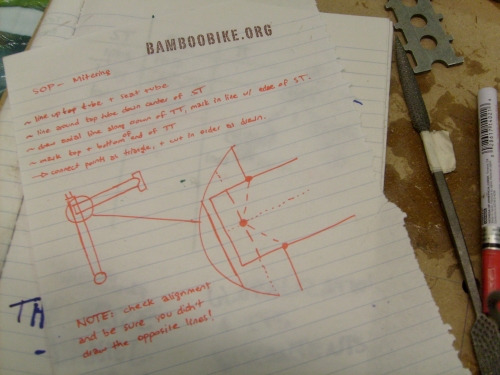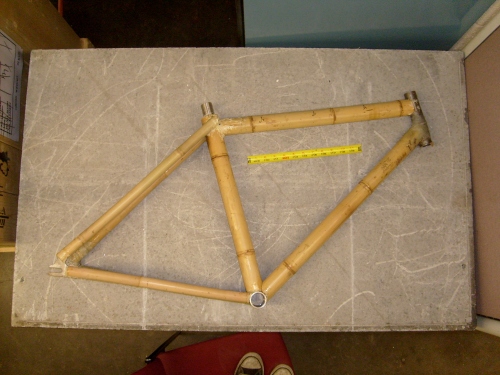 On November 27, 2008, bamboo bicycles earned a mention in The Economist print edition.
On November 27, 2008, bamboo bicycles earned a mention in The Economist print edition.
In an article called “On your bike: A scheme to encourage cheap transport on two wheels,” the magazine introduced bamboo bicycles as a potential “key to mobilising rural Africans and unclogging the cities.” It mentioned the high tensile strength of bamboo, the low purchasing cost of a bamboo bicycle, and the KPMG–authored market study for creating a bamboo bike factory in Kumasi, Ghana.
We need to clarify and expand upon a few things mentioned in the article, and have posted a comment on the Economist’s site under “gorfrog.” The United Nations Human Settlement Programme (UN-HABITAT) estimates that bicycle use in Africa is very high. For instance, there are 14,000 bicycles currently being used in Kumasi, Ghana alone – and that number is rapidly growing. The main problem with bicycles in Africa is that the bicycles that many have access to are utterly inappropriate for the terrain, and for the uses to which they are put. The “glutinous dirt roads” and potholes mentioned by the author as a way to explain bicycles’ lack of popularity is precisely why many in rural and urban areas across Africa and across the developing world see a need for all-terrain, light and durable cargo carriers like the bamboo bike, capable of replacing “unsuitable” Chinese bikes in an economy where many can’t afford cars. Such inappropriate bikes would indeed be discarded as soon as people have the chance to get a motor cycle or a car of any sort.
The Bamboo Bike Project has a unique mission that differs from the goals of individual entrepreneurs like American bike-maker Craig Calfee, mentioned in this article. His aim is to teach a few local entrepreneurs to build bamboo bicycles, and improve the livelihood of these entrepreneurs. However, this model will only produce tens of bikes a year, and will not be enough to satisfy the needs of larger populations in Africa. Just like in the US, boutique bike builders each produce ca. 100 bikes a year, whereas the large companies like Trek, Giant, Specialized, etc produce hundreds of thousands. It is these larger companies that are satisfying the needs of the majority of the people.
Our goal in the Bamboo Bike Project is to work with entrepreneurs and investors abroad who see economic, social, and technological potential in implementing large-scale bamboo bike production and sale in local markets. Ours is a project arising from the ground up, on the ground in areas like Kumasi, Ghana. Growth of the Bamboo Bike Project signifies the emergence of an industry more than the popularity of an imported invention.
Our sights are set much higher than a level of production limited to small workshops that produce only a few bikes a year. Success of the Bamboo Bike Project will mean the establishment and growth of a vast network of bamboo bicycle factories, which will each produce upwards of 20,000 bamboo bicycles annually for local distribution. The high levels of production and sale required by this model will more substantially improve the state of rural transportation, and will have a greater capacity to impact wider economic markets (potentially lowering the cost of other forms of effective transportation for rural residents even further). Larger factories will produce job opportunities that yield economic growth, and will be able to ensure quality control of our finished product.
We are excited by The Economist’s recognition of the bamboo bicycle and its potential, and are even more committed to our plans to transform that potential into a widely-experienced reality.







